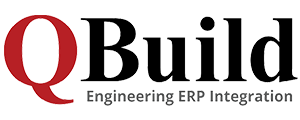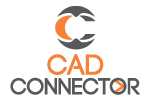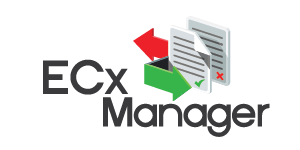Overcoming Engineering Challenges with ERP Integration
Automation and improved data can optimize operations for any industry. In the fast-paced world of engineering, organizations face numerous challenges that can hinder productivity and efficiency. The integration of Computer-Aided Design (CAD) software with Enterprise Resource Planning (ERP) systems has emerged as a powerful solution to overcome these obstacles providing improved data management with ERP integration can help to streamline resource allocation and supply chain management, improve insights for better decision-making and automates redundant processes to reduce wasted effort.
Read on as we explore some of the challenges faced by the engineering industry and discuss how CAD to ERP integration addresses them effectively.
Benefits of ERP For Challenges in Engineering
Let’s explore how ERP integration combats some of the most significant engineering challenges faced in the industry. Here are the benefits of ERP for challenges in Engineering.
Reducing Manufacturing Issues Caused by Bad Data
There are several manufacturing issues you might encounter by using inaccurate or incomplete data:
- Design and prototyping issues – insufficient data during the prototyping process can lead to incorrect or outdated specifications, quality parameters, or work instructions can lead to non-conformities, defective products, and increased rework or scrap rates If these issues occur, they can result in costly mistakes and compromise product quality.
- Inventory management issues -Inaccurate data can adversely impact inventory management, leading to issues such as stockouts, overstocking, or incorrect material allocations. For instance, if inventory records do not accurately reflect the actual stock levels, it can result in stockouts, causing production disruptions. Conversely, overestimating inventory levels based on erroneous data can lead to unnecessary stock accumulation, tying up capital and storage space. If you do not have clear-cut BOM data and supply chain management, you could experience shortages of raw materials. If you do not have enough raw materials for production, this will halt operations and cause losses.
- Product integrity – if you do not have reliable data during the quality assurance process, you could harm product integrity, leading to poor customer reviews.
CAD to ERP integration ensures accurate and complete data transfer from the CAD software to the ERP system. BOMs, part numbers, and specifications are seamlessly synchronized, minimizing errors and enabling manufacturing teams to work with reliable data.
Organizing Design Change Management
Design change management is a critical aspect of the product development lifecycle, and the integration of CAD and ERP systems provides a powerful solution to streamline and enhance this process. If your design changes are not effectively communicated or tracked, it could lead to a multitude of problems, including the following consequences:
- Delays and reworks – Without integration, workflow and approval processes for design changes often rely on manual, paper-based methods or separate systems. This manual approach can be time-consuming, error-prone, and lacks visibility. It can lead to bottlenecks, delays in decision-making, and difficulties in tracking the progress of design change requests.
- Quality control issues – Tracking and documentation for quality control is crucial in industries with stringent regulatory requirements and a lack of integration can create quality, compliance and documentation issues. Without a centralized platform, maintaining accurate records and documentation related to design changes becomes more complex, increasing the risk of non-compliance and potential quality control difficulties.
- Cost overruns – Design change management is essential to forecast costs and implement financial planning strategies. Without supporting documentation for raw materials and manufacturing processes, cost management can become challenging, leading to cost overruns.
Integration facilitates smooth and organized design change management. Design modifications made in the CAD software are automatically updated in the ERP system, ensuring real-time visibility for all stakeholders. Addressing the issues mentioned can be as simple as implementing a single integration, which can provide a unified platform for seamless data exchange, streamlined workflows, improved communication, enhanced visibility, and accurate documentation in design change management.
Reducing Manual Data Entry
Manual data entry processes are redundant and can seriously slow your manufacturing operations. Here are some of the manual data entry processes that can be automated with ERP integration:
- Fragmented Information Flow – Design data is often stored in separate systems, leading to fragmented information flow. CAD to ERP integration centralizes design data within the ERP system, allowing for seamless information sharing and collaboration across departments. It ensures that all stakeholders have access to the most up-to-date design information, promoting better decision-making and coordination.
- Data inconsistency and errors – Manual data transfer between engineering and ERP systems increases the risk of inconsistencies and errors. Integration can automate data synchronization, ensuring that design data is accurately and consistently transferred between engineering and the rest of the company. This reduces data discrepancies, eliminates manual entry errors, and improves overall data integrity.
- Lack of Real-time Visibility – Without integration, there can be a lack of real-time visibility into design-related activities and their impact on manufacturing processes. CAD to ERP integration provides real-time data synchronization, enabling immediate visibility into design changes, material requirements, and production status. This facilitates proactive decision-making, timely response to issues, and better production planning.
- Manual and Time-consuming Processes – Manual processes associated with design transfer, data entry, and coordination between CAD and ERP systems can be labor-intensive and time-consuming. CAD to ERP integration automates these processes, reducing manual effort and freeing up resources for more value-added activities. It improves process efficiency, reduces administrative burdens, and accelerates overall manufacturing timelines.
Reducing manual data entry processes reduces unnecessary time-consuming tasks and can make your data more reliable and ensure no errors in the manufacturing process.
Choose QBuild Integrations to Streamline Your Engineering Operations
ERP software is essential for manufacturing companies seeking a competitive edge in the industry. Production delays and poor organization can damage your company’s reputation and customer relationships. By implementing CAD to ERP integration, manufacturers can reduce the need for manual data entry, eliminate errors and inconsistencies, gain real-time visibility, and streamline processes. This not only saves time and effort but also improves data accuracy, operational efficiency, and decision-making capabilities.
For more information on CAD to ERP integration and its benefits in manufacturing, you can visit QBuild Software to explore their solutions and expertise in streamlining manufacturing operations.








































